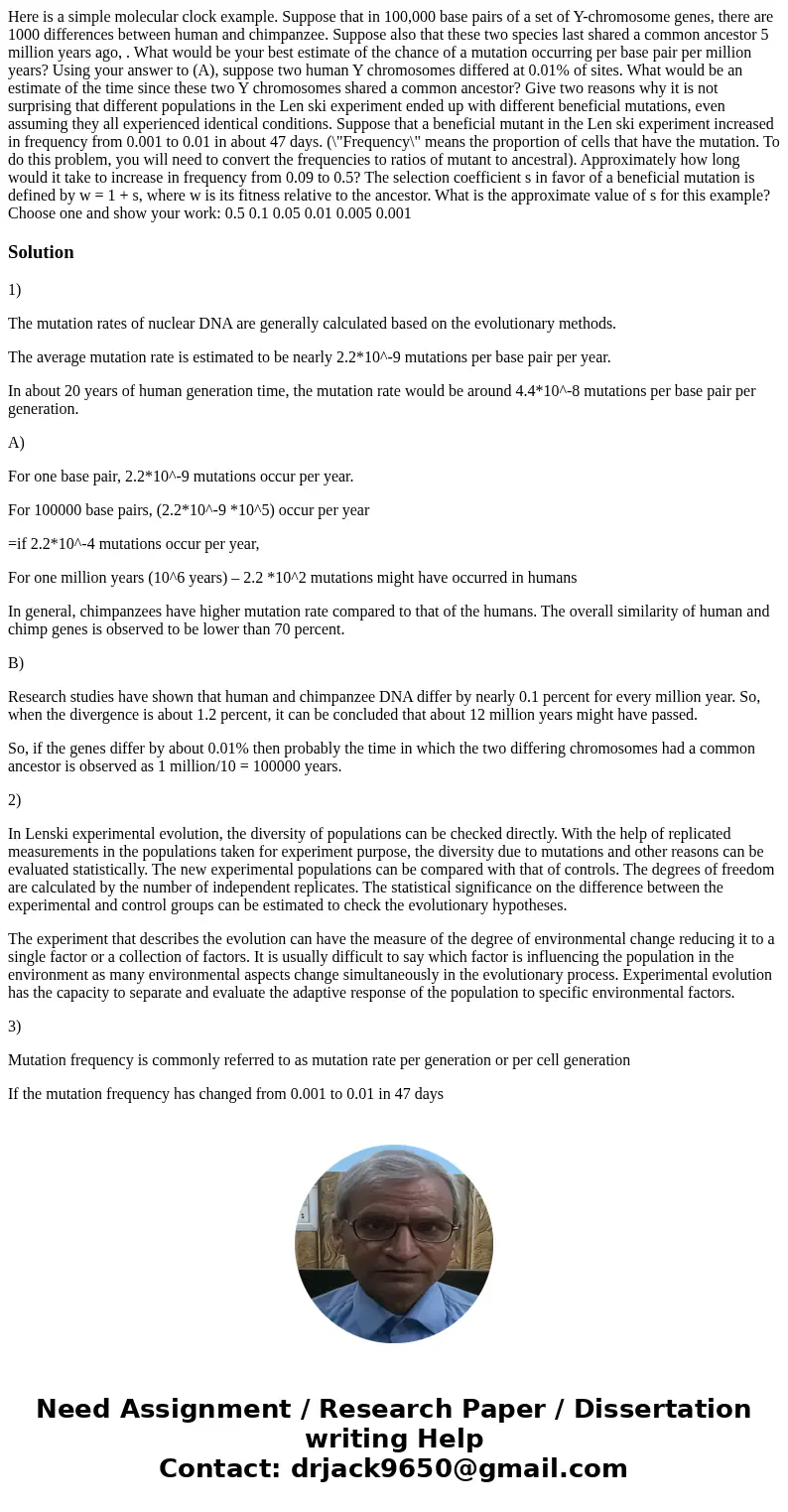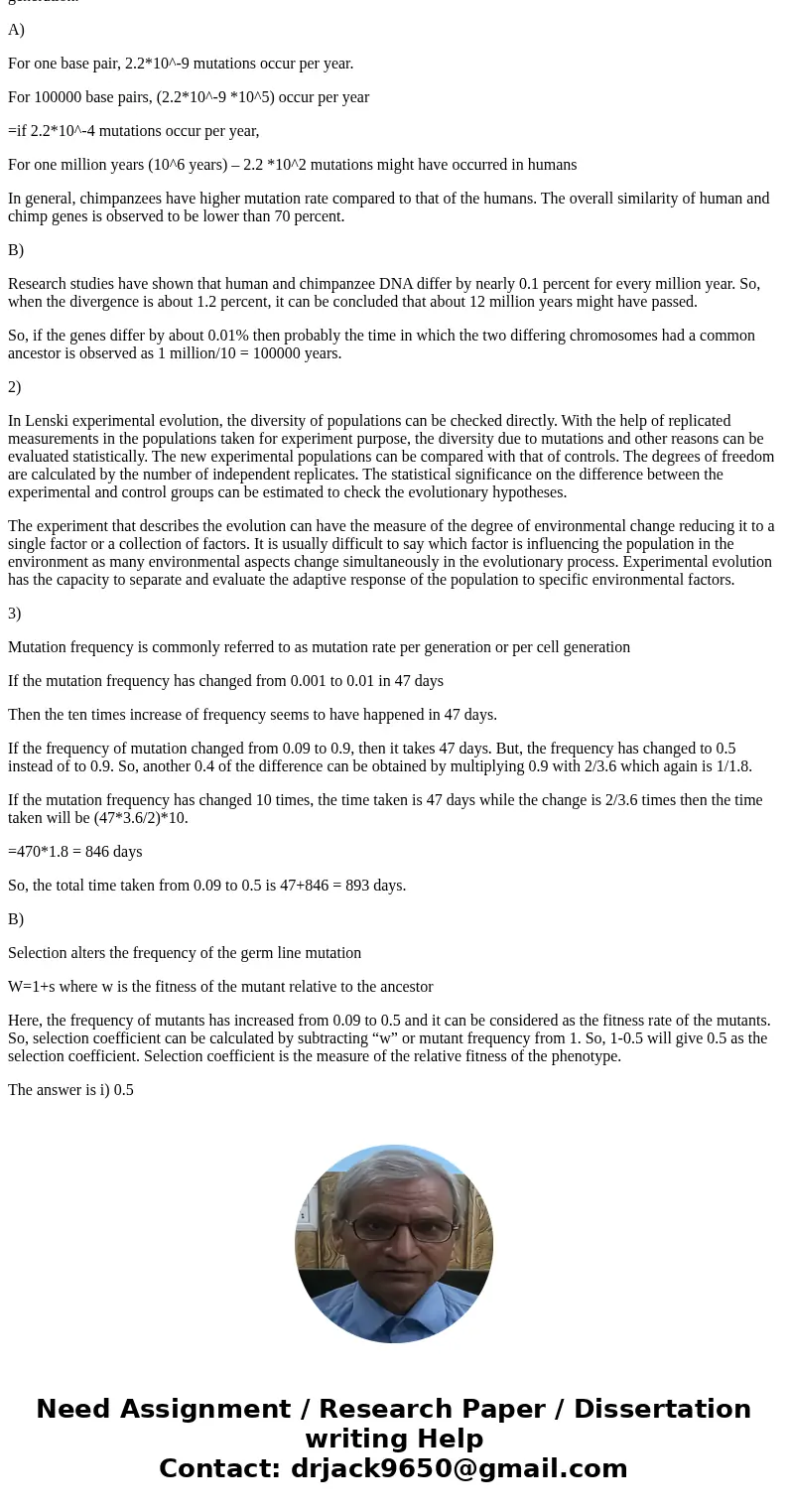Here is a simple molecular clock example Suppose that in 100
Solution
1)
The mutation rates of nuclear DNA are generally calculated based on the evolutionary methods.
The average mutation rate is estimated to be nearly 2.2*10^-9 mutations per base pair per year.
In about 20 years of human generation time, the mutation rate would be around 4.4*10^-8 mutations per base pair per generation.
A)
For one base pair, 2.2*10^-9 mutations occur per year.
For 100000 base pairs, (2.2*10^-9 *10^5) occur per year
=if 2.2*10^-4 mutations occur per year,
For one million years (10^6 years) – 2.2 *10^2 mutations might have occurred in humans
In general, chimpanzees have higher mutation rate compared to that of the humans. The overall similarity of human and chimp genes is observed to be lower than 70 percent.
B)
Research studies have shown that human and chimpanzee DNA differ by nearly 0.1 percent for every million year. So, when the divergence is about 1.2 percent, it can be concluded that about 12 million years might have passed.
So, if the genes differ by about 0.01% then probably the time in which the two differing chromosomes had a common ancestor is observed as 1 million/10 = 100000 years.
2)
In Lenski experimental evolution, the diversity of populations can be checked directly. With the help of replicated measurements in the populations taken for experiment purpose, the diversity due to mutations and other reasons can be evaluated statistically. The new experimental populations can be compared with that of controls. The degrees of freedom are calculated by the number of independent replicates. The statistical significance on the difference between the experimental and control groups can be estimated to check the evolutionary hypotheses.
The experiment that describes the evolution can have the measure of the degree of environmental change reducing it to a single factor or a collection of factors. It is usually difficult to say which factor is influencing the population in the environment as many environmental aspects change simultaneously in the evolutionary process. Experimental evolution has the capacity to separate and evaluate the adaptive response of the population to specific environmental factors.
3)
Mutation frequency is commonly referred to as mutation rate per generation or per cell generation
If the mutation frequency has changed from 0.001 to 0.01 in 47 days
Then the ten times increase of frequency seems to have happened in 47 days.
If the frequency of mutation changed from 0.09 to 0.9, then it takes 47 days. But, the frequency has changed to 0.5 instead of to 0.9. So, another 0.4 of the difference can be obtained by multiplying 0.9 with 2/3.6 which again is 1/1.8.
If the mutation frequency has changed 10 times, the time taken is 47 days while the change is 2/3.6 times then the time taken will be (47*3.6/2)*10.
=470*1.8 = 846 days
So, the total time taken from 0.09 to 0.5 is 47+846 = 893 days.
B)
Selection alters the frequency of the germ line mutation
W=1+s where w is the fitness of the mutant relative to the ancestor
Here, the frequency of mutants has increased from 0.09 to 0.5 and it can be considered as the fitness rate of the mutants. So, selection coefficient can be calculated by subtracting “w” or mutant frequency from 1. So, 1-0.5 will give 0.5 as the selection coefficient. Selection coefficient is the measure of the relative fitness of the phenotype.
The answer is i) 0.5


 Homework Sourse
Homework Sourse